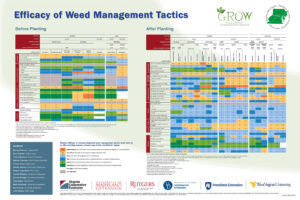Grant.gov applications are due by April 29, 2021 and
paper applications must be postmarked by May 4, 2021
The Value-Added Producer Grant (VAPG) program administered by the USDA’s Rural Development Agency (RD), helps agricultural producers enter into value-added activities related to the processing and marketing of new products. The goals of this program are to generate new products, create and expand marketing opportunities, and increase producer income. [Read more…]

 age of 88. After completing his college degree at Rutgers, Bill served our country in the military until 1955 where he earned the rank of First Lieutenant. He then returned to Rutgers, Cook College, to teach and later became an Extension Specialist in Agricultural Engineering. Early in his career, he invented the air-inflated, double-layer polyethylene film system for covering the roof of a greenhouse. Today, approximately 65 percent of all commercial greenhouses in the United States use the air-inflated system. This innovation won Bill many awards and tremendous gratitude from the industry. On a personal note, Bill was most known for his tremendous faith and love for family; especially wife Dottie. For more information about Bill Roberts, please see the beginning pages of the
age of 88. After completing his college degree at Rutgers, Bill served our country in the military until 1955 where he earned the rank of First Lieutenant. He then returned to Rutgers, Cook College, to teach and later became an Extension Specialist in Agricultural Engineering. Early in his career, he invented the air-inflated, double-layer polyethylene film system for covering the roof of a greenhouse. Today, approximately 65 percent of all commercial greenhouses in the United States use the air-inflated system. This innovation won Bill many awards and tremendous gratitude from the industry. On a personal note, Bill was most known for his tremendous faith and love for family; especially wife Dottie. For more information about Bill Roberts, please see the beginning pages of the 